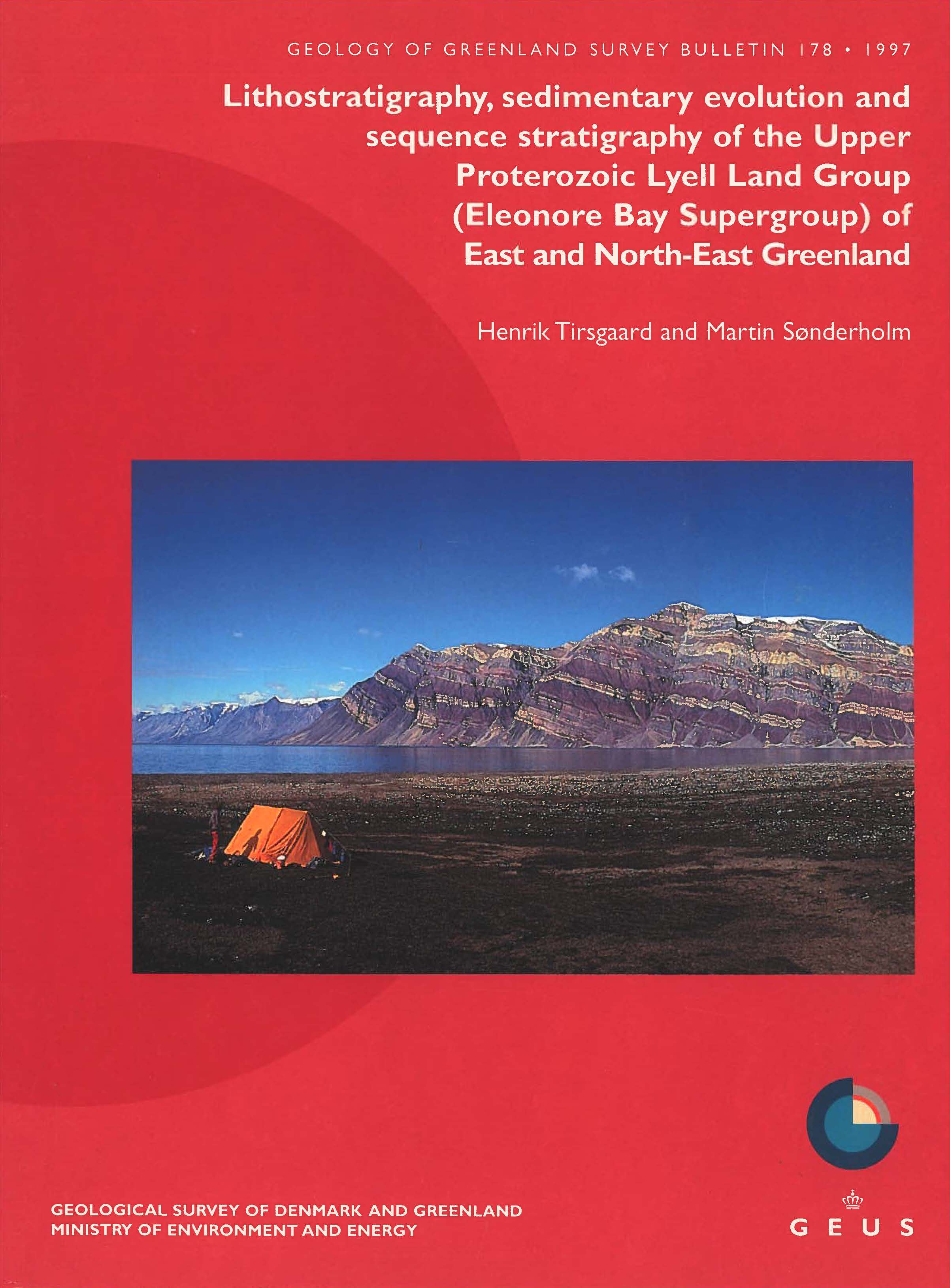Lithostratigraphy, sedimentary evolution and sequence stratigraphy of the Upper Proterozoic Lyell Land Group (Eleonore Bay Supergroup) of East and North-East Greenland
DOI:
https://doi.org/10.34194/ggub.v179.5076Keywords:
Eleonore Bay Supergroup,, Late Proterozoic, East Greenland, Caledonides, lithostratigraphy, sequence stratigraphy, siliciclastic marine sediments, sedimentary environments, facies associations, outer shelf,, inner shelf, shoreface, coastal plain, palaeocoastline orientation, basin physiography, palaeogeographic reconstruction, Lyell Land GroupAbstract
The Late Proterozoic Lyell Land Group is an approximately 3 km thick succession of siliciclastic shelf deposits, within the upper part of the Eleonore Bay Supergroup. It is widely exposed in the region between Ardencaple Fjord in the north and Canning Land in the south. In this paper the seven formations named by Sønderholm & Tirsgaard (1993) are formally described. These are from base to top: the Kempe Fjord Formation (400-600 m thick), the Sandertop Formation (200-405 m thick), the Berzelius Bjerg Formation (250-450 m thick), the Kap Alfred Formation (500-640 m thick), the Vibeke Sø Formation (290-325 m thick), the Skjoldungebrae Formation (205-240 m thick) and the Teufelsschloss Formation (35-110 m thick).
Five facies associations have been recognised. Outer shelf deposits dominated by dark green, brown to dark red mudstones with thin sandstone lenses are mainly found in the Sandertop, Kap Alfred and Skjoldungebræ Formations. Storm- and wave-dominated inner shelf deposits comprising fine-grained sandstones and dark heterolithic mudstones are common in the Sandertop, Kap Alfred, Vibeke Sø and Skjoldungebrae Formations and are also found in southern outcrops of the Teufelsschloss Formation. Tidally influenced shoreface deposits form stacks of laterally extensive sandstone bodies separated by heterolithic mudstones and are only found in the middle part of the Kap Alfred Formation. Storm- and wave-dominated shoreface deposits comprise highly mature, thick and laterally very extensive sandstone bodies of which a few may be traced for distances exceeding 150 km. This association is present in several intervals within all formations of the Lyell Land Group. Tidally dominated coastal plain deposits consist of stacked sandstone sheets forming laterally extensive, multistorey units separated by heterolithic mudstones and sandstones. These sediments form part of the Kempe Fjord and Berzelius Bjerg Formations and are also found in northern outcrops of the Teufelsschloss Formation. Evidence from palaeocurrent data combined with regional lithological variations suggest a consistent general N-S coastline with the basin deepening in an eastward direction. Deflection of geostrophic currents suggest a palaeolatitude on the southern hemisphere.
The deposits of the Lyell Land Group are subdivided into four, large-scale sequences which overall show the same general sedimentary evolution through time reflecting large-scale, cyclic changes in relative sea-level. The sequences vary in thickness from 400-1000 m and are all readily traceable 300 km parallel and 100 km perpendicular to inferred palaeocoastline. The development of all sequences indicates that major regional translation of facies are related to large-scale forced regressions. Sequence stratigraphic considerations suggest that correlation of formations of the Lyell Land Group with units of the Petermann Bjerg Group some 75 km to the west may be very difficult to carry out.
Citation: Tirsgaard, H. & Sønderholm, M. 1997: Lithostratigraphy, sedimentary evolution and sequence stratigraphy of the Upper Proterozoic Lyell Land Group (Eleonore Bay Supergroup) of East and North-East Greenland. Geology of Greenland Survey Bulletin 178, 60 pp.
Downloads
Additional Files
Published
Issue
Section
License
This article is distributed under a CC-BY 4.0 licence, permitting free redistribution and reproduction for any purpose, even commercial, provided proper citation of the original work. Author(s) retain copyright over the article contents.


